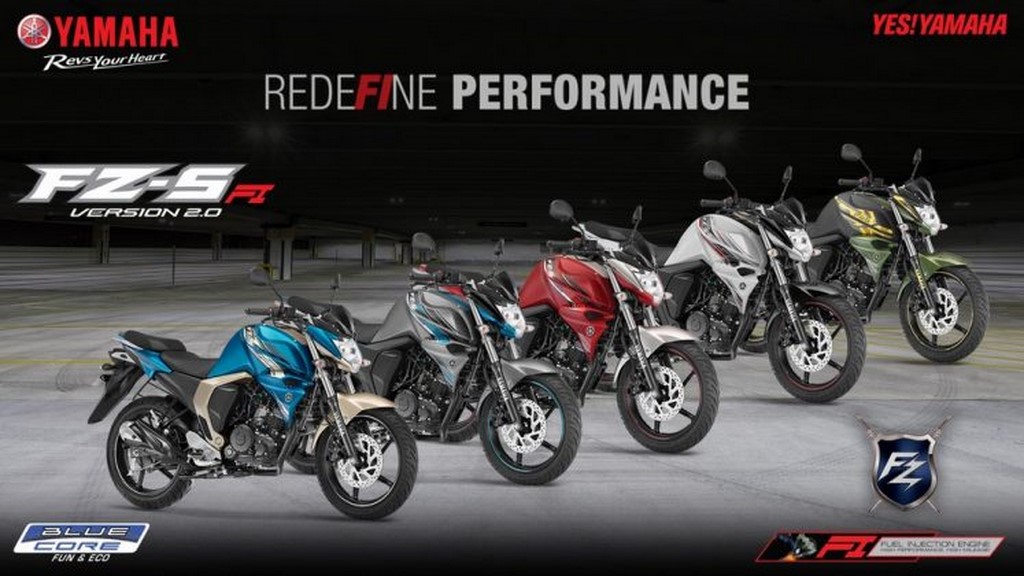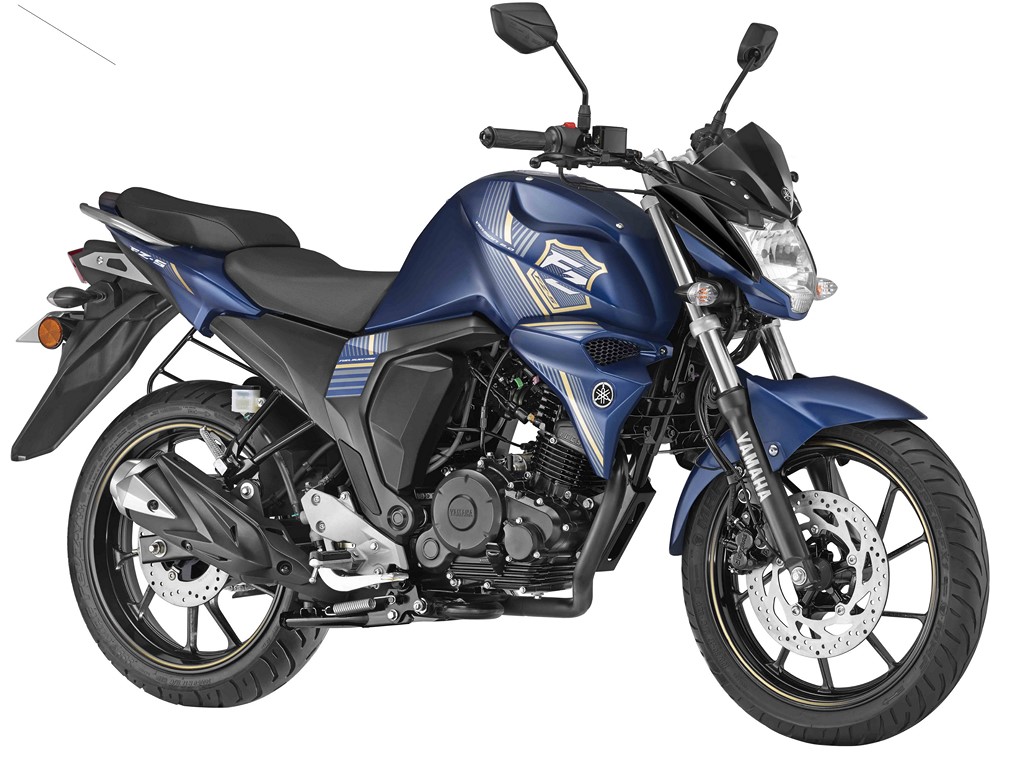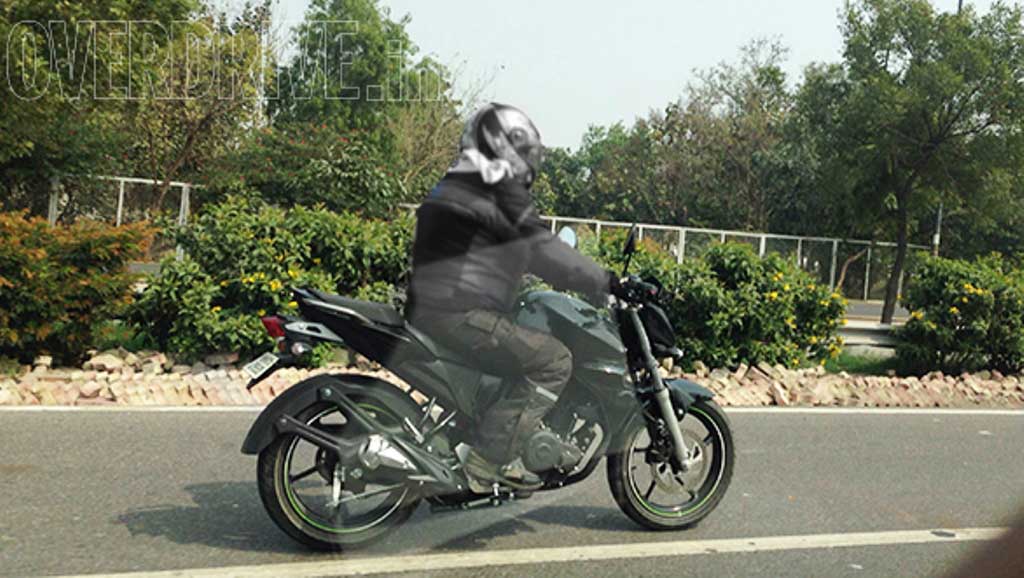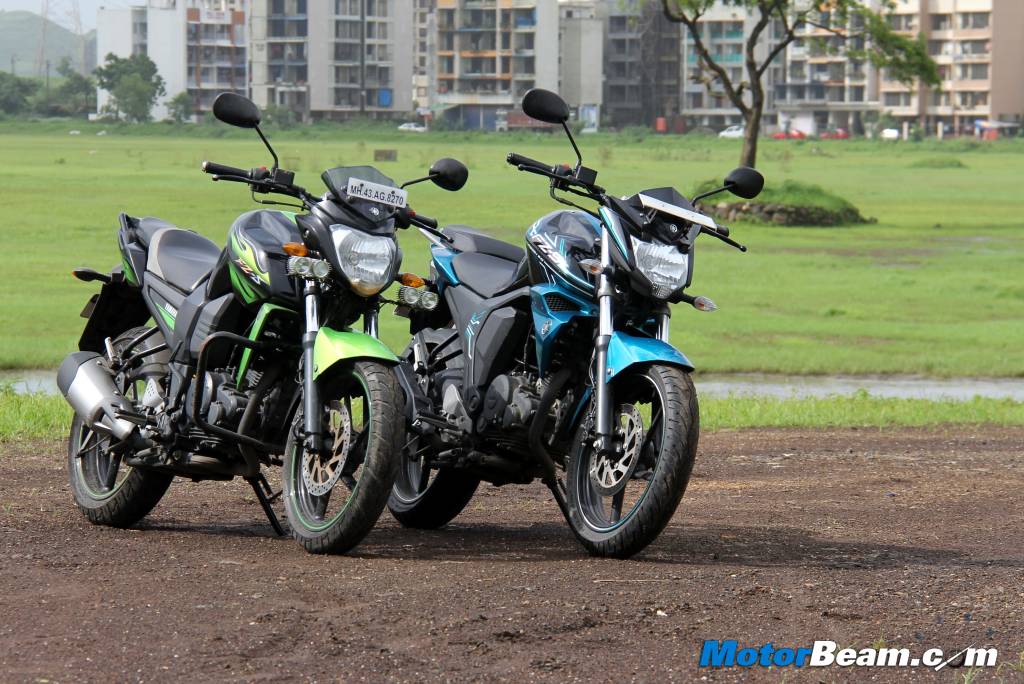
Shootout: Yamaha FZ-S V1.0 vs Yamaha FZ-S V2.0
Price OTR Mumbai: Rs. 83,343/- (Yamaha FZ-S V1.0) Rs. 91,300/- (Yamaha FZ-S FI V2.0)
The FZ-S FI V2.0 vs FZ-S V1.0 is a heart over head decision that you need to make
Technology is playing a crucial role all of a sudden in our market today. The more the tech, the higher the promise of efficiency, reliability and focus towards other many key areas. Primarily the engine and the characteristic is to suit a particular demand the consumer really wants. A person who is looking for top-end power is a rider who looks for a sporty bike and someone who wants good city ride-ability is looking for a peppy motorcycle offering good low-end response. To cater to these needs are various techs which have come over time; OHC, SOHC, 2-valves, 4-valves, different type of carburettors and now fuel injection has become the latest fad. The list is endless and perhaps that should be left for another day or the specific question can’t be answered here. But now let’s concentrate on what we have here today with us. The FZ series is the most accomplished series worldwide for Yamaha. Kudos to Yamaha to bring it to India in the right way, which is obviously scaling it down and giving more to the customer than he actually needed. Every FZ rider since the last six years has been happy with his motorcycle but the only and truly one thing which wasn’t perfectly right was the mileage which wasn’t as impressive as other 150cc bikes. Obviously he knew his bike did fall in the same “cc” category but this was a extremely sporty version which was not there in the market until now. Japanese competition is on its way as usual which is being extremely late to the party. Yamaha has now upgraded the FZ in such a way that it has left people spell bound that something like this could happen. A 2-valve, fuel-injected motor has found its way in the FZ and promises the same thrills while also adding more performance and km/l numbers at the same time. Has Yamaha done it the right way and are the silent claims right? Let’s find out!
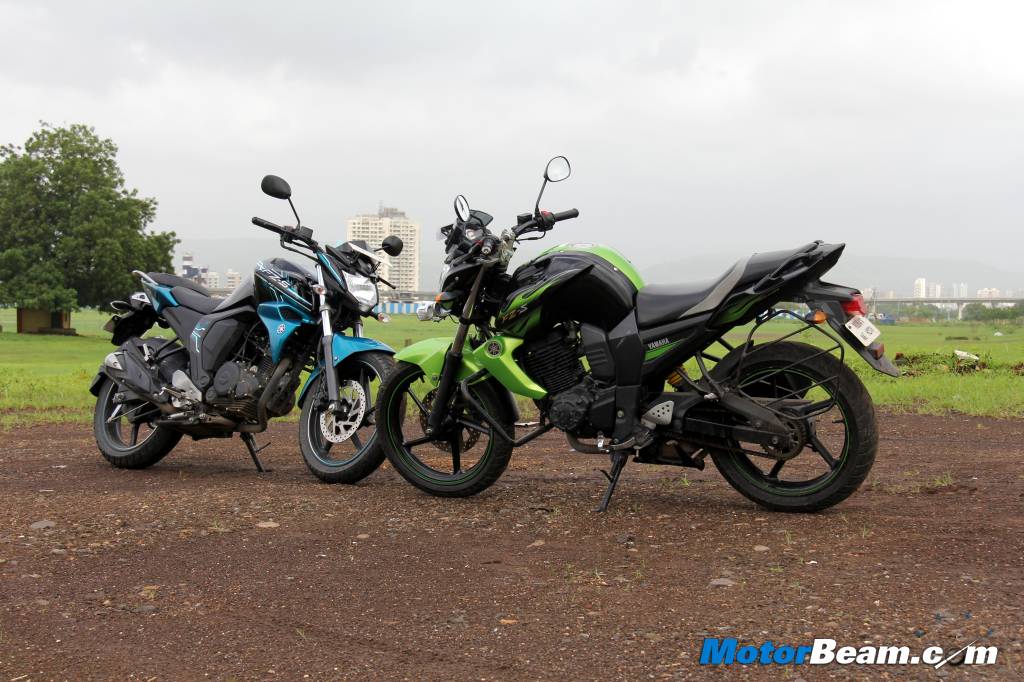
When it comes to styling, there has been a major overhaul but it still remains an FZ the moment you look at it. Fuel-tank, one of the major aspect that remains unchanged and also includes fat forks, wide tyres and a rear monoshock. The exhaust looks like a rocket rather than a dumbbell now. Split seats instead of single slim piece seat adds visual appeal to the bike which also goes hand in hand with the split grab rails. Cheap indicators are replaced with clear lens turn indicators. Yamaha is never short on designing new stuff and making everything else look brand new while keeping the iconic overall aesthetics appealing, staying firm with their tradition. However, critics are not loving the new design and the person who leased us his V1.0 for this test said words like “looks Chinese at the front” in Hindi. So you can imagine how it hasn’t gone down well with some people. He is an FZ enthusiast since years so we support him but we are not fully committed to his statement either.
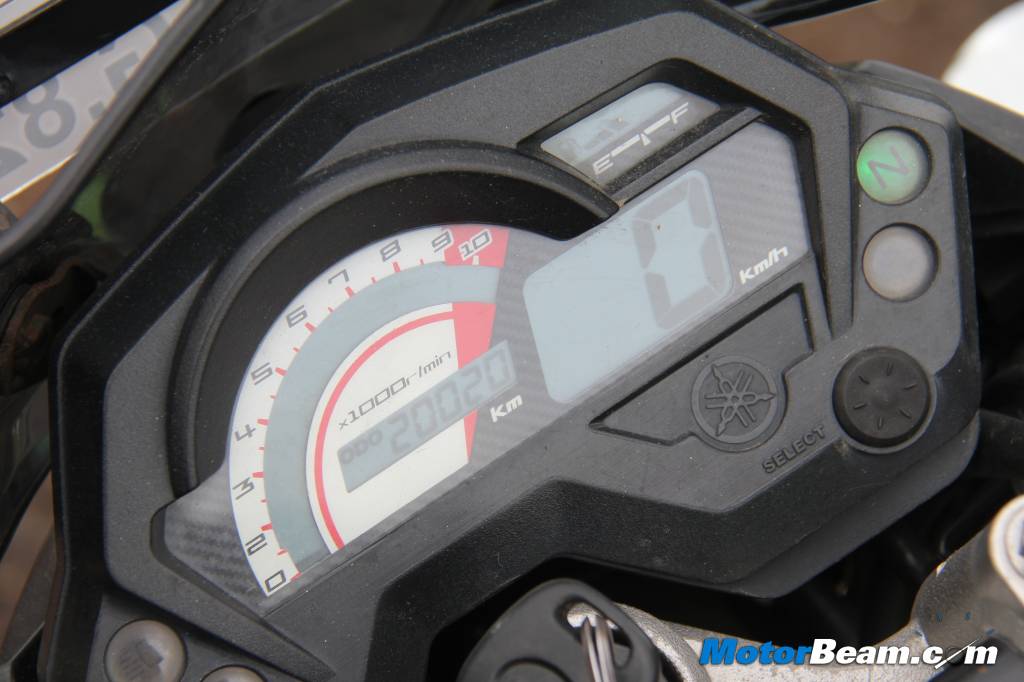
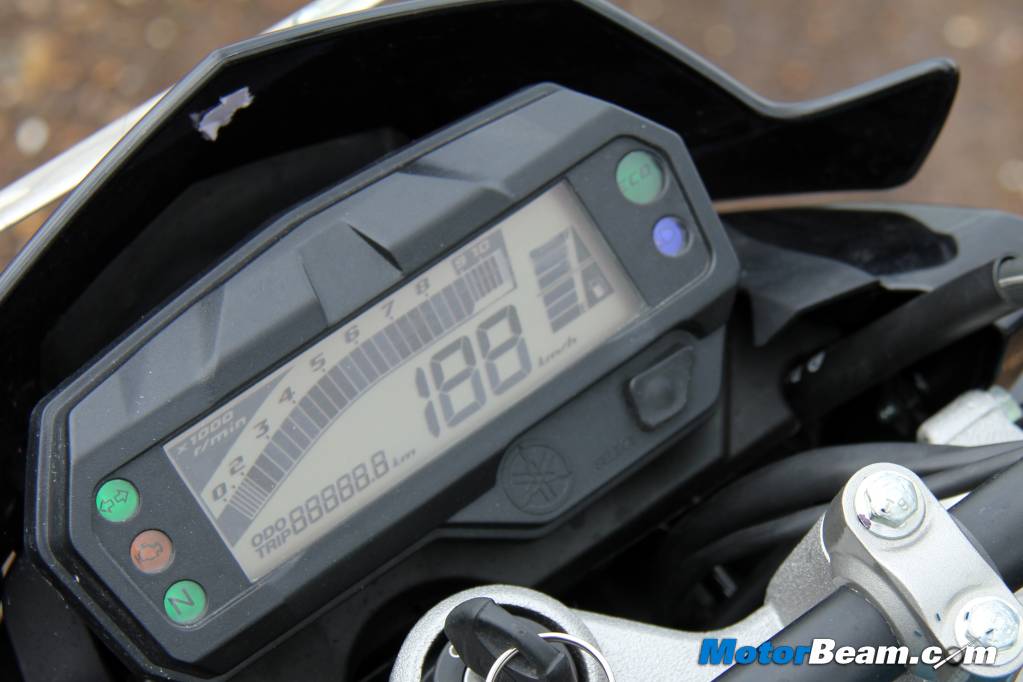
New console looks better and substantial but there is nothing more (in terms of features) except an ECO indicator
He is right in a way. The macho look is surely gone and now John Abraham should not be advertising it anymore with a ridiculous tagline which is creating a sense of voluptuousness in the industry and among enthusiasts. Anyways, back to the machine. The cluster is far more better than before in terms of visual appeal but it does not get any extra features except for one ‘ECO’ indicator. In terms of practicality and ergonomics, everything remains pretty much the same, except the seat height which has gone down by 5 mm while the pillion seat has gone up to prevent claustrophobic experience for the pillion so that he can see ahead. You can read our comparo and standalone reviews for more information but let’s stick to what is essential here, this time, which is the total package difference.
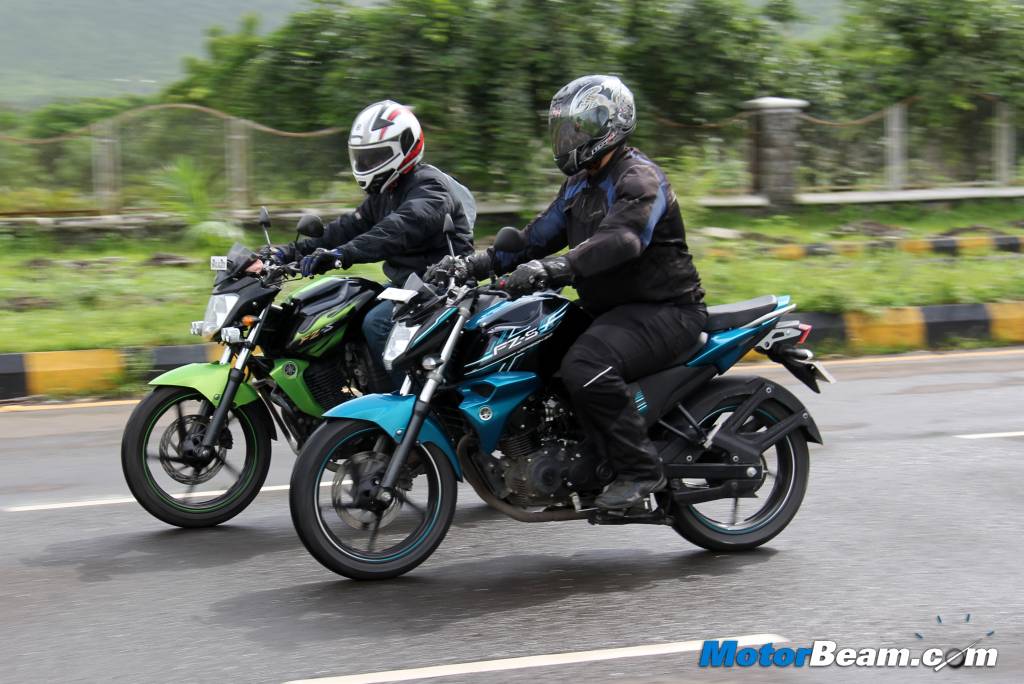
This is the place where, if, Yamaha has made changes they had to be very careful of what they are doing. They got a fair share of criticism when they did the same thing (chassis bits) to the R15 V 2.0 which resulted in a weight gain of 5 kgs and the wheelbase was increased too. All of this as we know is blasphemy in a super-sport bike which does not help make things better but certainly not worse either. The FZ had a primary problem, which was, despite it being as quick as competition, did not make it “feel” that way. This happened because the chassis was so darn superlative that it absorbed everything and partly because of the rear tyre which was frankly three times bigger than the competition, did not affect performance thanks to the shorter gearing but did have a significant impact on the top speed and km/l numbers. The problem of “feeling” under powered is gone now. If you are going fast, you will definitely feel that you are fast. So that’s one thing which Yamaha has taken into consideration and resolved it for the good.

However, does that feeling of being faster transfer to numbers? Yes. As you can see in the table below, the FZ V2.0 is negligibly faster to 60 km/hr and 100 km/hr than the FZ V1.0. All of this happened because the V1.0 uses a 40T sprocket at the rear while the V2.0 uses a 41T. The 3 kg difference and fourth gear redline is also reason why the new bike takes similar time to reach the ton. So the low-end power has been boosted but at the top-end it continues to be even more stressed than before (at and after 90 km/hr). Also a bit of top-end rush which was there earlier, has also gone because of lower horsepower and torque figures compared to the V1.0. Top speed remains the same though but it takes time to be achieved when compared back to back, you can instantly notice the difference. Talking about similarities, both bikes retain the humongous catalyser aka catcon despite the new FZ smoking out less carbon in the air. The reason why it has been retained is because the FZ V2.0 is ready for BSIV emission and norms, clearing it with flying colours. Now let’s talk about how it feels. Coming first to the small and significant changes, the shifter of the gearbox has been changed to deliver more thud-ness to every gear change rather than the springy feel which the V1.0 has. Riding them back to back cleared our doubts completely.
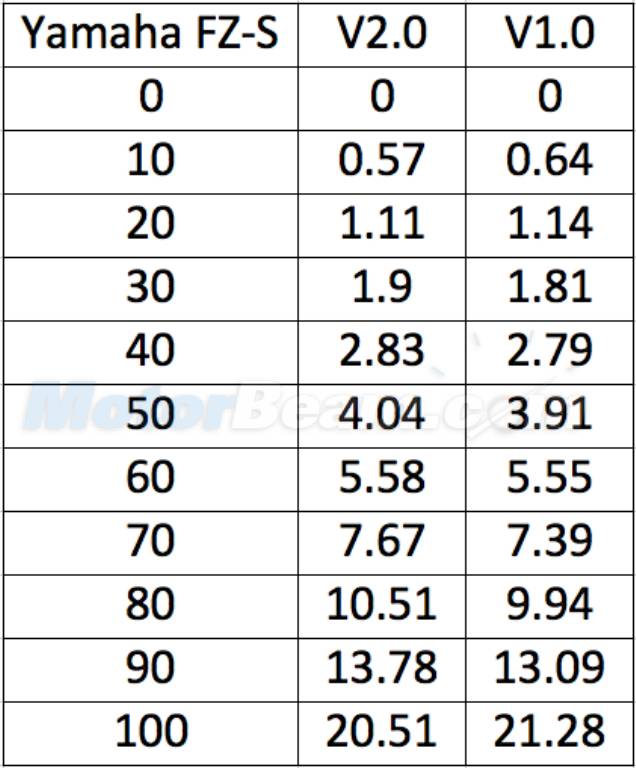
The most significant change is in engine character. The engine thanks to FI, has become a screamer despite it having a narrow powerband to play with. This has happened because the torquey nature is gone and now the focus is on horsepower similarly like any Honda engine in the automotive world. One of the many aspects that come with the introduction of FI, comes to the FZ naturally. The much talked about throttle response has got better because the FZ FI now getting dual throttle cables. The carburettor one still has the soft throttle which did not appeal to us. It only helped making things easier for the daily commuter and did not please the enthusiast who wanted a crisper throttle. The carburettor motor also feels smooth, refined and vibe free like the FI version but when you ride it back to back, you realise that wee bit of lumpiness when you get into the torque band. That slight amount of push is what you experience in a good way. We personally love the carburettor one because it is more torquey and also sounds more musical and sporty. However, the FI is also too much fun which cannot be denied at any cost. The FZ FI is more fuel efficient, that too by a huge margin. Earlier the worse economy was 39 km/l but it now stretches to 43 km/l so if ridden sanely, the FZ V2 can reach that 47-49 km/l mark quite easily.
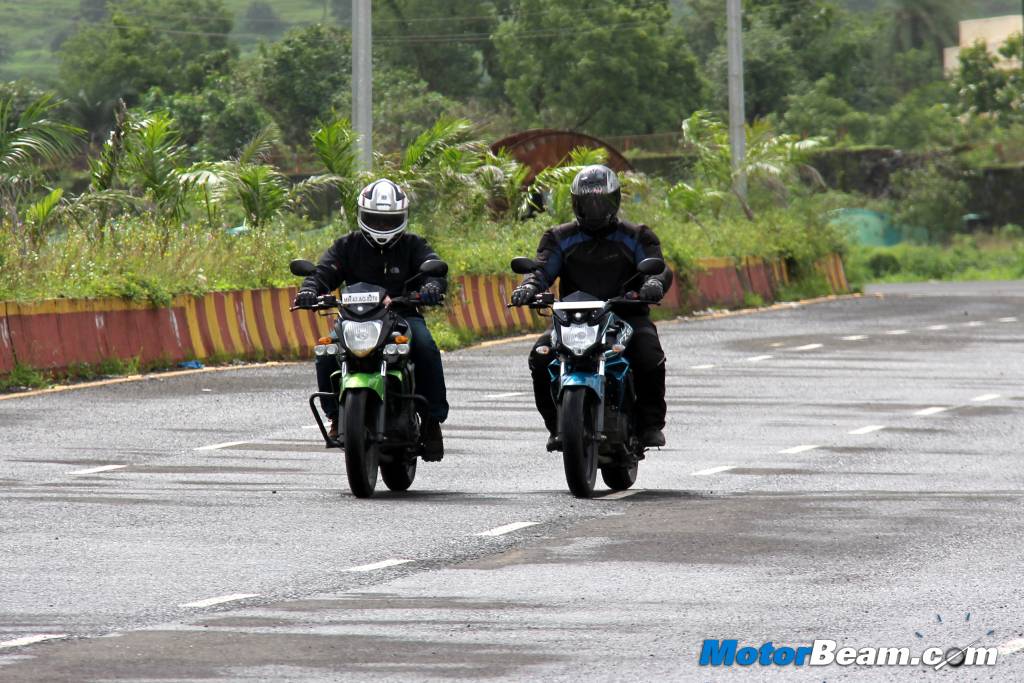
The carburettor engine is more torquey but the motor on the FI model is a screamer and also slightly quicker, it’s more frugal
When it comes to dynamics, Yamaha has been at the top of the game and now they have improved the chassis of the already impressive FZ V1.0. Yamaha says the chassis is entirely new and it has been done for the good. The overall bike (V2.0) is lighter than the older version by 3 kgs, half of which comes from the chassis revision. When you compare both, you can see the FZ FI sits lower as the height has decreased by 15 mm. Like we told you before, the bike does not feel under powered anymore despite the loss in output. The chassis now feels more agile and immensely alive than before. The chassis still, can take a lot more power and also provides confidence and stability to the rider which is unmatched. Yamaha has been doing something else very secretly as well. If you see one of the old tyres of the FZ from 2008, they will be a bit wider than what we get on the bikes today. The tyres which come from the factory and the ones which are available on the outside have seen a change in pattern and noticeable change in compound as well. Braking on both bikes remain the same as they use the same hardware with zero changes anywhere in any part since it was already very good. The problem with the new as well as the old FZ remains consistent, which is the U-turn radius that is significantly larger than its rivals since the day it was launched thanks to the ultra wide handlebar.
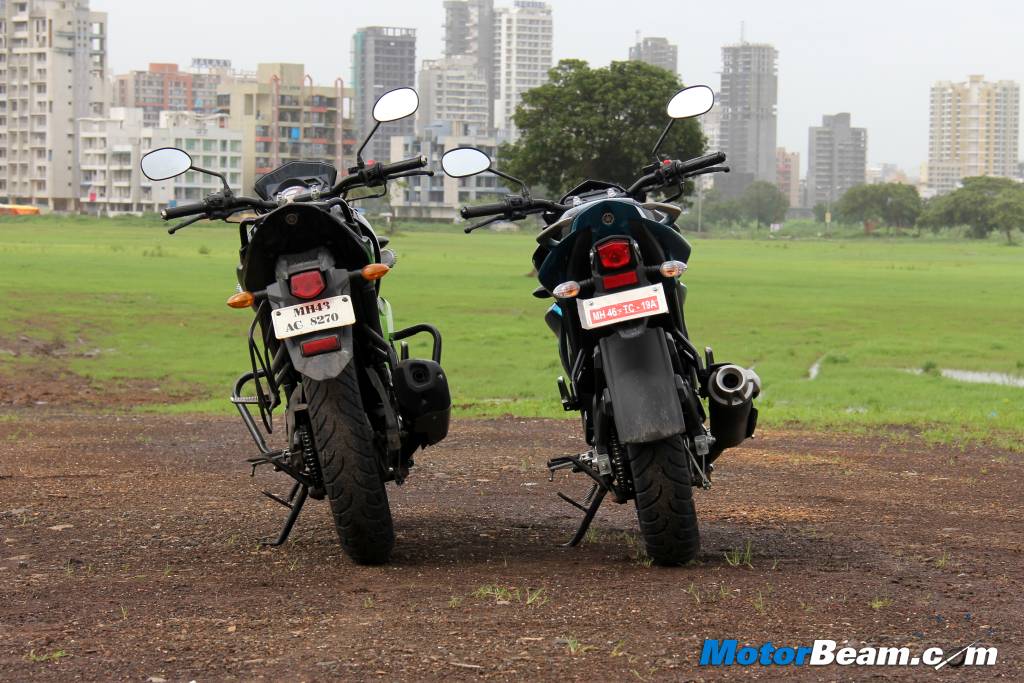
The profile of the tyres has got much rounder than before and Yamaha themselves have claimed that the puncture prone old tyres have gone for the good. Rounder tyre profile helps in a sharper steering which is also noticeable on both bikes we had here, because the tyres here on the old FZ have been also changed as it was due. If you see any studio shot available of the bike from the launch year on the internet, you can pretty much notice the subtle difference. The damping of the rear suspension has changed for sure too. That wee bit of harshness at the bottom of the stroke is gone but the underlying stiffness is still there in abundance to help it go around corners better while also giving it a mature ride quality over our broken roads.
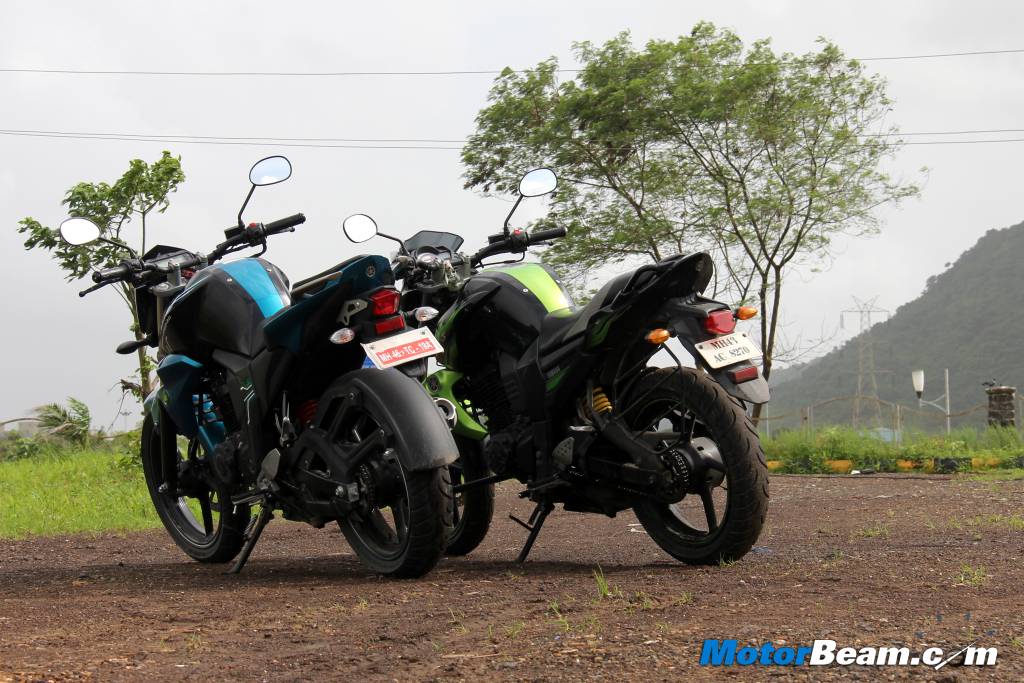
Well if we compared it like how we do usually at MotorBeam, then the FZ FI version would win. It has far more better fuel economy, a better chassis, the ride quality is even better and the bike is much more comfortable and practical than before. The performance, which is key for most buyers is also much better than before which is the icing on the cake. However, the styling on the new and old bike is very different which represents carburettor and FI as well. We personally like the carburettor equipped bike for the styling and more torquey nature despite it being slower. However, the FI version makes more sense and is the practical one of the lot and the extra amount you pay over the carburettor version is easily recoverable within a few months of ownership. It is quite rare, the predecessor despite being the winner of many hearts will be replaced with the successor because it is that good. Anyways in both cases, whatever it is, it’s undoubtedly, Yes Yamaha!
You cannot go wrong with either of these machines which come from the same stable and are the current champions in their category. Choose you priorities in terms of your budget and mostly styling and you have a winner which awaits your garage.

Further Reading –
Yamaha FZ FI V2.0 Review
Yamaha FZ V1 Review
Yamaha FZ FI V2.0 vs Suzuki Gixxer vs Honda CB Trigger vs TVS Apache 160
Yamaha FZ FI V2.0 vs Honda CB Trigger


